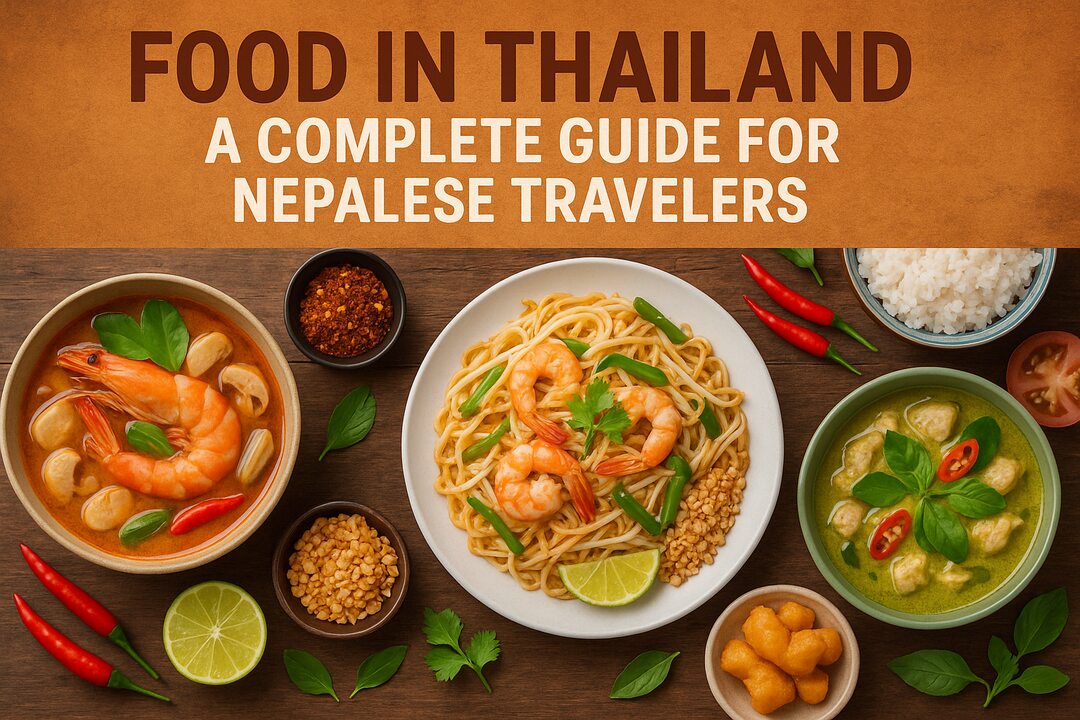When to Hit Thailand?
Welcome to the Land of Smiles, Sunshine, and Sometimes Storms!
Hey there, future Thailand explorer! So you’re dreaming of golden temples glinting in the sunshine, pad thai that’ll make your taste buds do a happy dance, and beaches so perfect they look Photoshopped? Well, timing is everything in the Land of Smiles! Thailand’s got this whole “three seasons instead of four” situation going on, and picking the best time to visit Thailand season wise can be the difference between Instagram-worthy memories and, well, seeking shelter from monsoon rains while your flip-flops float away.
Table of Contents
Whether you’re a beach bum, temple enthusiast, night market ninja, or jungle trekker, I’m about to hook you up with the insider scoop on exactly when to book that ticket. We’re talking weather patterns, regional quirks, crowd levels, and even how to score those sweet, sweet hotel discounts. By the time you finish this guide, you’ll be high-fiving yourself for being so darn prepared!
Thailand’s Three Seasons
Forget spring, summer, fall, and winter, Thailand plays by its own rules with three distinct seasons that’ll shape your travel experience. Let’s break them down with zero meteorological jargon and 100% practical advice and know the best time to visit Thailand!
COOL SEASON (November-February)
The Instagram Season
Imagine You’re sipping a coconut on a pristine beach, and you’re not even sweating through your cute vacation outfit. That’s cool season magic! With temperatures chilling at a comfortable 18-32°C (64-90°F), this is when Thailand puts on its best show.

The skies are fifty shades of blue, rain is basically nonexistent, and even the humidity decides to take a vacation. Sure, you’ll be sharing those perfect views with plenty of other travelers (hello, peak season prices!), but there’s a reason this is the most popular time to visit. It’s like Thailand’s saying, “This is my good side!”
The cool season is especially delightful in northern spots like Chiang Mai, where evenings might actually have you reaching for a light jacket (I know, shocking!). Meanwhile, beaches along the Andaman coast are living their best life with calm seas and water so clear you can count the fish’s eyelashes.
If you’re a first-timer to Thailand or someone who wilts in extreme heat, cool season is your jam. Just book accommodations well in advance.
HOT SEASON (March-June)
The Sweat-Fest with Perks
Let me be real with you, hot season is INTENSE. We’re talking temperatures that regularly crash the 40°C (104°F) party, especially in April when Thailand seems to be auditioning for a role as the sun’s neighbor. You’ll sweat in places you didn’t know could sweat, and midday sightseeing becomes an extreme sport.

BUT! (And this is a big but!) Hot season has some serious hidden perks that the average tourist misses. For starters, April hosts Songkran, Thailand’s New Year water festival, which is basically the world’s biggest water fight. When the whole country is throwing water at you, that heat becomes much more bearable and you’ll have the cultural experience of a lifetime!
The hot season also sees fewer tourists (because, you know, melting isn’t everyone’s vacation goal), which means shorter lines at attractions and better deals on accommodations. If you’re a heat warrior with a good sunhat and a water bottle permanently attached to your hand, you might find the trade-off worthwhile.
Beach lovers should know that March and early April still offer decent conditions at places like Koh Samui, Koh Phangan, and Koh Tao in the Gulf of Thailand. The water’s warm, the skies are mostly clear, and you won’t be fighting for your spot of sand with the high-season crowds.
RAINY SEASON (July-October) (Not known as Best time to visit Thailand)
The Emerald Season
Okay, let’s bust a myth right away, Rainy season doesn’t mean non-stop, Noah’s-Ark-building downpours. What it actually means is bright, sunny mornings followed by dramatic afternoon thunderstorms that roll in, dump some serious rain for an hour or two, then peace out. Rinse and repeat.

These months transform Thailand into fifty shades of green. Rice paddies become emerald mirrors, waterfalls roar to life, and the countryside looks like it’s showing off for a National Geographic photoshoot. Temperatures cool down to a more manageable 25-32°C (77-90°F), and there’s something magical about watching tropical storms roll in from a covered bar with a cold Chang beer in hand.
The biggest perk? Your baht goes SO much further during these months. We’re talking 30-50% discounts on accommodations, smaller crowds at major attractions, and a more authentic experience as you’ll be mingling with more locals than tourists. September typically sees the heaviest rainfall, but even then, you’ll get plenty of sunshine between showers.
Beach conditions vary dramatically depending on which coast you’re visiting (more on that later), but if temple-hopping, jungle trekking, and city exploring are on your agenda, don’t automatically rule out the rainy season. Just pack a light raincoat, embrace the afternoon siesta during downpours, and enjoy the lush, vibrant Thailand that many tourists never get to see.
Best Time to Visit Thailand
Your Region-by-Region Perfect Season Guide
Planning your Thai adventure? The best time to visit Thailand varies dramatically depending on where you’re headed. Each region has its own perfect season when weather, crowds, and activities align to create an unforgettable experience. Let me guide you through Thailand’s regional sweet spots to help you plan the ultimate trip!
Northern Thailand’s Perfect Season
November to February
During these glorious cool months, Northern Thailand transforms into a wonderland. Temperatures dance between a comfortable 15-28°C (59-82°F) during the day, while evenings bring a refreshing chill that might actually have you reaching for a light sweater, a rare treat in Thailand!

What makes this season truly magical is the morning mist that hugs the mountains around Chiang Mai and Chiang Rai. Picture yourself watching sunrise from Doi Suthep temple as golden light cuts through swirling fog, illuminating dragons and Buddhas. The air quality is crystal clear, perfect for those panoramic mountain photos that’ll make your friends jealous.
The cool, dry conditions create the ideal environment for exploring temple complexes without breaking a sweat, hiking through hill tribe villages, and wandering night markets with a hot cup of Thai tea in hand. December brings spectacular flower blooms to Doi Inthanon and other mountain parks, while January offers the clearest skies for stargazing in more remote areas like Pai and Mae Hong Son.
Festival lovers get an extra treat, this period hosts the magical Yi Peng lantern festival (November) when thousands of paper lanterns float into the night sky, creating one of Thailand’s most breathtaking sights.
BEST TIME TO VISIT THAILAND NORTHERN REGION: November to February offers the most comfortable conditions and clearest air quality.
AVOID: March to May, when the combination of extreme heat and poor air quality from agricultural burning creates challenging conditions.
Central Thailand’s Perfect Season
December to January
Bangkok and the central plains hit their sweet spot during these two months, when the urban heat finally takes a vacation. Temperatures hover at a manageable 22-32°C (72-90°F) with significantly lower humidity than the rest of the year, creating what locals call “Thai winter” (though visitors from colder climates might just call it “pleasant”).

This perfect window makes exploring Bangkok’s grand temples and palaces actually enjoyable rather than an endurance test. You can wander the Grand Palace complex without seeking shade every five minutes, and those iconic photos of Wat Arun or Ayutthaya’s ancient ruins come out crisp against brilliant blue skies.
The cool evenings transform Bangkok’s rooftop bars and riverside restaurants into magical spots for dining and people-watching. Even the notorious Bangkok traffic seems less oppressive when you’re not marinating in humidity while stuck in a tuk-tuk.
December brings festive decorations to Bangkok’s malls and public spaces, while January offers slightly smaller crowds after the New Year rush subsides. Throughout both months, central Thailand’s famous floating markets burst with color and produce, making for perfect day trips from the capital.
BEST TIME TO VISIT THAILAND CENTRAL REGION: December to January offers the most comfortable conditions for exploring Bangkok and the central plains.
AVOID: April, when extreme temperatures make outdoor activities nearly unbearable in urban areas.
Andaman Coast’s Perfect Season
December to March
Thailand’s postcard-perfect western beaches reach peak perfection during these months. The Andaman Sea transforms into a mesmerizing palette of turquoise and emerald, with underwater visibility stretching to an impressive 20-30 meters a dream come true for snorkelers and divers.

Phuket, Krabi, Phi Phi, and Koh Lanta bask under consistently sunny skies with temperatures ranging from 23-33°C (73-91°F). The sea remains calm and inviting, with gentle waves lapping at powder-white beaches. Those iconic longtail boat photos against limestone karsts? This is when to take them.
February hits the sweet spot within this perfect season the Christmas/New Year crowds have thinned, but the weather remains flawless. Marine life thrives, with increased sightings of manta rays and whale sharks around the Similan Islands (which are only open during this season).
Beach days extend into beautiful evenings with stunning sunsets painting the sky in impossible colors. Even the occasional brief rain shower clears quickly, leaving everything feeling fresh rather than interrupting your beach time.
BEST TIME TO VISIT THAILAND ANDAMAN COAST: December to March, when perfect weather coincides with calm seas and excellent visibility.
AVOID: May to October, particularly September, when heavy rainfall and rough seas can significantly impact beach activities and island accessibility.
Gulf Coast’s Perfect Season
February to April
While the Andaman side begins heating up in March, the islands of Koh Samui, Koh Phangan, and Koh Tao enter their prime. These months deliver the Gulf’s most consistent sunshine, with comfortable temperatures between 24-32°C (75-90°F) and sea conditions calm enough for even novice swimmers.
The water clarity reaches its peak in March, with visibility often exceeding 20 meters around Koh Tao’s famous dive sites. This coincides perfectly with increased whale shark sightings, offering underwater photographers dream conditions.
Beach days on Samui’s Chaweng or Phangan’s Thong Nai Pan feature the perfect combination of sunshine and cooling sea breezes, while evenings remain warm enough for comfortable beachfront dining under the stars. The Gulf’s perfect season also coincides with some of the region’s most famous parties the Full Moon Party hits its stride with ideal weather conditions.
What makes this timing extra special is that while crowds begin to thin on the Andaman coast as heat builds, the Gulf remains comfortable, offering a perfect alternative for beach lovers extending their Thai adventure.
BEST TIME TO VISIT THAILAND GULF COAST: February to April, when the Gulf coast enjoys sunny, dry conditions with optimal sea visibility.
AVOID: October to December, particularly November, when heavy rainfall can impact island activities.
Eastern Seaboard’s Perfect Season
December to February
Thailand’s often-overlooked eastern beaches like Pattaya, Koh Chang, and Koh Kood experience their prime during these months. With sunny days, moderate temperatures between 23-32°C (73-90°F), and calm seas, the eastern seaboard becomes a perfect escape from Bangkok.

Koh Chang and Koh Kood transform into tropical paradises during this period, with waterfalls still flowing from the recent end of rainy season while skies remain consistently clear. The jungle-covered mountains of these islands appear extra lush against the deep blue sky, creating dramatic backdrops for beach days.
The seas around these islands calm down completely, perfect for kayaking through mangroves, exploring tiny deserted beaches only accessible by boat, and snorkeling around vibrant coral reefs. December brings festive beach celebrations to Pattaya and Bang Saen, while January and February offer slightly quieter experiences with perfect weather conditions.
What makes the eastern seaboard particularly special during its perfect season is the combination of excellent weather and significantly smaller crowds than the more famous beach destinations, creating a more authentic Thai beach experience.
BEST TIME TO VISIT THAILAND EASTERN SEA BOARD: December to February, when consistent sunshine and comfortable temperatures prevail.
AVOID: June to October, particularly September, when heavy rainfall can impact beach activities.
The Universal Sweet Spot
Late February
Understanding the best time to visit Thailand can be complicated when you want to see multiple regions. However, late February represents Thailand’s universal sweet spot. During this magical two-week window, almost every region experiences optimal or near-optimal conditions:
- The north remains comfortably cool but has begun warming slightly, with wildflowers in bloom
- Bangkok and central Thailand still enjoy manageable temperatures before the April heat surge
- The Andaman coast continues its perfect beach conditions with slightly smaller crowds
- The Gulf islands reach their prime with consistent sunshine and calm seas
- The eastern seaboard offers warm days and refreshing evenings
This perfect convergence of regional weather patterns creates an ideal opportunity for multi-destination travelers to experience Thailand at its best, from mountains to metropolis to magnificent beaches, all in one perfectly-timed trip.
By aligning your Thai adventure with these perfect seasons for each region, you’ll experience the Land of Smiles at its absolute finest. The best time to visit Thailand ultimately depends on your specific itinerary, but these regional insights will ensure you see each destination when it’s truly showing off!
Activity-Based Timing: Do What You Love in Weather You’ll Like
Beyond geography, what you plan to do in Thailand should heavily influence when you visit. Let’s break it down by activity!
Temple Adventures & Cultural Deep-Dives
Temples are everywhere in Thailand, and they’re spectacular but much less fun when you’re sweating through your respectful long pants or getting drenched by surprise downpours.

OPTIMAL CONDITIONS: Moderate temperatures, dry weather, clear skies for those stunning photos
BEST TIME TO VISIT THAILAND TEMPLES: November to February, when you can explore extensive temple complexes without melting!
REGIONAL NOTES:
- Northern Temples: November to February is magical, with morning mist creating ethereal settings at places like Doi Suthep in Chiang Mai
- Bangkok Temples: November to January offers the most comfortable conditions for exploring the Grand Palace, Wat Pho, and other must-sees
- Isaan Temples: November to January is ideal for exploring northeastern gems like Phanom Rung and Phimai
TEMPLE TIP: Visit major temples right when they open (usually around 8am) to beat both the heat and the tour bus crowds!
Beach Life & Island-Hopping Adventures
Thailand’s beaches are the stuff of desktop wallpapers, but timing is everything when it comes to clear water, calm seas, and perfect tanning conditions.

OPTIMAL CONDITIONS: Sunny days, calm seas, excellent visibility, minimal rainfall
BEST TIME TO VISIT THAILAND BEACHES BY REGION:
- Andaman Coast: December to March (with February being the sweet spot)
- Gulf Islands: February to April (with March offering the perfect balance)
- Eastern Beaches: December to February
UNIVERSAL SWEET SPOT: Late February is perhaps the only time when ALL of Thailand’s beaches are experiencing near-perfect conditions simultaneously.
BEACH HACK: For that perfect combo of great weather and manageable crowds, aim for early February after the Chinese New Year rush has subsided or late March after the Western winter holidays end.
Diving & Snorkeling Expeditions
Underwater visibility and marine life activity vary dramatically throughout the year, and serious divers should plan accordingly.

OPTIMAL CONDITIONS: Calm seas, excellent visibility, minimal rain
BEST TIME TO VISIT THAILAND FOR ADVENTUROUS ACTIVITY BY REGION:
- Andaman Sea: December to April offers 20-30m visibility and calm conditions
- Gulf of Thailand: March to September provides 15-25m visibility with March-April being optimal
SPECIAL UNDERWATER HIGHLIGHTS:
- Whale Shark Spotting at Koh Tao: Most common in March-April and again in October
- Manta Ray Season in the Andaman: February to April offers the best chances
- Similan Islands: Only open October 15 to May 15 annually (and best in December-April)
DIVER’S TIP: Book liveaboard trips well in advance for the December-March high season, when the best diving conditions coincide with peak tourist season.
Trekking & Nature Adventures
Thailand’s diverse landscapes offer everything from jungle treks to mountain hikes, but timing affects trail conditions, wildlife activity, and your overall comfort.

OPTIMAL CONDITIONS: Moderate temperatures, minimal rainfall, clear visibility
BEST TIME TO VISIT THAILAND TREKKING DESTINATIONS BY REGION:
- Northern Thailand Trekking: November to February for comfortable temperatures and dry trails
- Khao Yai National Park: November to February for wildlife spotting and cooler hiking weather
- Southern Thailand Rainforests: February to April offers a good balance of manageable humidity and minimal rain
SPECIAL NATURE HIGHLIGHTS:
- Waterfall Chasers: August to October when cascades reach their most impressive flow
- Bird Watching: November to February brings migratory species to Thailand
- Wildlife Spotting: Early morning during the cool season offers the best chances
NATURE TIP: Late November to early December offers an excellent combination of comfortable temperatures, minimal rainfall, and lush landscapes following the rainy season.
Best Time to Visit Thailand For Festivals
Thailand knows how to throw a party, and many travelers time their visits specifically to experience these unforgettable cultural celebrations. Here’s when to catch the best ones!
November: Loy Krathong & Yi Peng (Lantern Festivals)
WHEN: Full moon of the 12th lunar month (usually November)

THE EXPERIENCE: One of Thailand’s most photogenic festivals, when people release floating offerings (krathongs) onto water and, in northern Thailand, paper lanterns into the night sky. It’s pure magic watching thousands of lights drifting on water and floating into the darkness.
BEST LOCATIONS:
- Sukhothai: The historical setting for the traditional Loy Krathong, with elaborate light displays in the ancient ruins
- Chiang Mai: The epicenter of Yi Peng, where the sky becomes filled with thousands of glowing lanterns
- Bangkok: Elaborate celebrations along the Chao Phraya River with beautifully decorated boats
BEST TIME TO VISIT THAILAND FOR FESTIVALS: November offers comfortable temperatures and minimal rainfall perfect festival conditions!
PLANNING TIP: Book accommodations 3-6 months in advance, especially in Chiang Mai where the best viewing spots fill up fast.
April: Songkran (Thai New Year Water Festival)
WHEN: April 13-15 annually

THE EXPERIENCE: The world’s biggest water fight! What began as a respectful water blessing has evolved into a nationwide water war, with everyone from toddlers to grandmas armed with water guns, hoses, and buckets. It’s chaotic, hilarious, and perfectly timed for Thailand’s hottest month.
BEST LOCATIONS:
- Chiang Mai: Famous for its moat-circled Old City that becomes water fight central for five days
- Bangkok: Khao San Road and Silom for the most intense urban water battles
- Old Town Phuket: More family-friendly celebrations with cultural performances alongside water play
WEATHER NOTE: Coincides with the hottest time of year, making water fights genuinely refreshing rather than just fun
PLANNING TIP: Waterproof EVERYTHING your phone, camera, money, and anything else you don’t want soaked. Resistance is futile; you WILL get wet!
October: Vegetarian Festival in Phuket
WHEN: First nine days of the ninth lunar month (usually October)

THE EXPERIENCE: Not for the faint-hearted! This intense Chinese-origin festival features face-piercing processions, firewalking, and other extreme acts performed by spirit mediums. It also offers amazing vegetarian food markets and vibrant shrine ceremonies.
BEST LOCATIONS:
- Phuket Town: Center of the most extreme celebrations
- Bangkok’s Chinatown: More moderate but still fascinating observances
WEATHER REALITY CHECK: Falls during the rainy season, with frequent showers
WARNING: Some ceremonies are genuinely shocking and not suitable for sensitive viewers or children
Other Notable Festivals Worth Planning Around:
- Chinese New Year (January/February): Vibrant celebrations in Bangkok’s Chinatown and Phuket
- Rocket Festival (May): Northeastern Thailand’s raucous rain-summoning rocket competitions
- Elephant Round-up (November): Surin’s famous elephant festival
- Lopburi Monkey Banquet (November): A bizarre and delightful festival offering a feast for the city’s macaque population
FESTIVAL HACK: For the perfect combination of amazing festival experiences and ideal weather, plan your trip around Loy Krathong in November, It is best time to visit Thailand. You’ll get to experience Thailand’s most magical celebration during what’s already considered the best time of year weather-wise!
Best time to visit in Thailand for Budget Travelers
Thailand is already incredibly affordable for most Western travelers, but timing your visit strategically can stretch your baht even further.
Rainy Season Savings (June to October)
The rainy season is budget-traveler paradise, offering:
- Accommodation Discounts: 30-50% off high-season rates, especially at beach resorts
- Emptier Attractions: Far fewer tourists, meaning no waiting in lines
- Cheaper Flights: Typically lowest in September and October
- The Trade-Off: Regular rainfall, particularly afternoon showers
- Best Rainy Season Value: June and late October offer reasonable weather with significant discounts
Shoulder Season Sweet Spots (November, March)
Smart travelers target these transitional months for the perfect balance of good weather and good value:
- Early November: Excellent weather as the rainy season ends but before peak season prices take effect
- March: After high-season crowds diminish but before extreme heat arrives
- The Savings: 15-30% lower prices than peak season with nearly-as-good weather
- The Reality: Still relatively busy at major destinations
Savvy Beach Destination Timing
Different beaches hit their budget sweet spots at different times:
- Koh Samui, Koh Phangan (July-August): Good weather with lower prices while the Andaman coast experiences rainy season
- Hua Hin, Cha-Am (Weekdays year-round): Significant discounts outside of weekend periods when Bangkok residents flee the city
- Koh Chang (April-May): Hot but manageable with excellent value before rainy season
BUDGET MASTERMIND TIP: For the absolute best combination of good weather and value, the first two weeks of November represent a sweet spot that savvy travelers target year after year.
Packing Like a Pro: Season-by-Season Essentials
Nothing ruins a trip faster than being unprepared for the weather. Here’s your season-specific packing guide!
Cool Season (November-February) Essentials
- Daytime Clothes: Lightweight, breathable clothing in natural fibers
- Evening Extras: Light jacket or sweater for northern regions
- Footwear: Comfortable walking shoes and sandals
- Sun Protection: Hat, sunglasses, and sunscreen (minimum SPF 30)
- Temple Visits: Modest clothing covering shoulders and knees
- Northern Nights: Warmer layers for potentially chilly evenings in mountainous regions
Hot Season (March-June) Survival Kit
- Clothing: Ultra-lightweight, loose-fitting, quick-dry fabrics
- Sun Defense: Wide-brimmed hat, high-SPF sunscreen, UV-blocking sunglasses
- Hydration: Refillable water bottle and electrolyte supplements
- Comfort Boosters: Portable fan, cooling towel, face mist
- Songkran Preparation: Waterproof phone case, quick-dry clothing, waterproof bag
- Footwear: Breathable sandals and quick-dry shoes
Rainy Season (July-October) Must-Haves
- Rain Gear: Lightweight rain jacket or poncho, compact umbrella
- Footwear: Quick-dry, non-slip sandals or water-resistant shoes
- Clothing: Quick-dry fabrics that won’t stay damp
- Bag Protection: Waterproof backpack or waterproof backpack cover
- Electronics: Waterproof cases for phone/camera, extra batteries
- Health: Insect repellent (DEET or picaridin-based)
- Convenience Items: Microfiber towel for drying off after showers
PACKING PRO TIP: Regardless of season, always pack a sarong! It serves as a beach towel, modest temple cover-up, makeshift curtain, picnic blanket, and emergency fashion statement.
When Should YOU Visit Thailand?
The best time to visit Thailand ultimately depends on your priorities, budget, and the specific experiences you seek. Here’s your personalized decision guide:
First-Time Visitors: Aim for late November to early February for the most consistently pleasant conditions nationwide. January is the ideal month for experiencing all of Thailand’s diverse regions with minimal weather compromises.
Beach Enthusiasts: Align your visit with your preferred coastline December to February for the Andaman Sea, February to April for the Gulf with February being the universal sweet spot for beaches across all regions.
Budget Travelers: Consider early November or late March for the optimal balance of favorable weather and reasonable prices. If you’re really pinching pennies, June and October offer the best weather-to-price ratio during the rainy season.
Festival Seekers: November’s Loy Krathong offers a magical cultural experience during what is already the best weather period, while April’s Songkran provides an unforgettable water festival that makes the extreme heat bearable.
Northern Thailand Explorers: Focus on November to February to avoid both the burning season haze and the heavy rains.
Photography Enthusiasts: Early morning in November and December offers misty mountain magic in the north, while the rainy season delivers dramatic skies and lush landscapes for those willing to dodge showers.
Remember that even during the “worst” times to visit any particular region, Thailand still offers exceptional experiences with proper preparation and expectations. The “Land of Smiles” welcomes travelers year-round, and with this guide in your pocket, you’re now equipped to find your perfect Thai timing!
Whether you’re planning to meditate in ancient temples, party on tropical beaches, trek through emerald jungles, or eat your way through night markets, understanding Thailand’s seasonal patterns will help you create the perfect adventure in this extraordinary Southeast Asian paradise.
Now go check those flight prices, and don’t forget to pack your sense of adventure (and appropriate weather gear)! And if you just want to travel and don’t want hurdles connect with Gomayu today!












